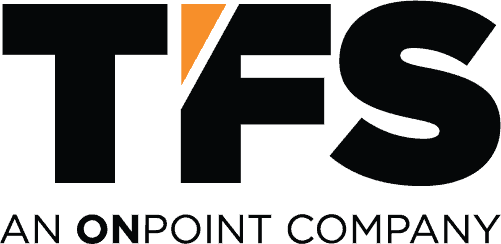 If there’s one piece of advice that sums up material handling in 2022 it’s to “prepare for the unpredictable.” Many of the trends that impacted supply chains and distribution center operations in 2021 remain in play; it’s likely that storing and moving goods will become even more complex in the months ahead.
If there’s one piece of advice that sums up material handling in 2022 it’s to “prepare for the unpredictable.” Many of the trends that impacted supply chains and distribution center operations in 2021 remain in play; it’s likely that storing and moving goods will become even more complex in the months ahead.
While it would be ideal to say the worst is over, the truth is no one knows when conditions might veer back to some semblance of normal.
What we do know is that there are trends that will shape (and reshape) material handling operations over the next twelve months.
With that, here are TFS’s predictions for the top trends of 2022, along with recommendations to help you prepare:
Trend 1: Moving from “Just in Time” to “Just in Case” Inventory Management?
This trend has recently caught a lot of buzz. Organizations have struggled with supply chain disruptions, with many saying they’d move backwards in time to a “just in case” inventory management practice. Overall, this doesn’t seem to be getting widespread adoption, and we’d strongly caution the approach. Yet, if you combine this pseudo trend with the massive growth of online fulfillment, it’s clear that warehouse space constraints are here to stay. Space is at a premium as inventory stock grows to meet ecommerce demands.
Recommendations: Rethink your footprint. Consult a warehouse process expert who can help identify root cause issues and potential solutions–these could include process changes, building up vertically vs. horizontally, and rethinking your SKU mix.
“You should have an annual process to examine SKUs and ‘kill’ those you don’t need, removing them from your facility,” said Ryan Lynch, Vice President of Marketing. “That requires a disciplined effort from the supply chain, logistics as well as sales and marketing teams. It’s a hard process, but it ultimately benefits everyone.”
Trend 2: Continued mergers and acquisitions
Mergers and acquisitions (M&A) are a quick way for companies to expand and adopt new capabilities. Expect distributors to do the same as low-interest rates continue to create M&A-friendly conditions.
Recommendations: Acquiring warehouse space requires integrating new people, systems, equipment, and operational data. Getting these integrations right is critical. It begins with taking stock of your new facility assets (e.g., fleets, talent, systems, etc.) to determine where they can make the biggest impact. Then, map your old and new assets and look at them holistically. Does anything need to be shifted to better fill a need elsewhere?
M&As are really about scale, growth, and the bottom line, so these transitions are a good time to evaluate and outsource anything that is not a core competency.
Trend 3: 3PLs will be leveraged for scale and efficiency
Third-party logistics providers will play a more important role in helping distribution centers navigate current challenges and achieve growth.
Recommendations: Consider how 3PLs can help your operation achieve scale, then find partners that will achieve your goals. For example, 3PLs are great for a hybrid model, where you own your core distribution infrastructure, but outsource new products or new regions. Many companies use 3PLs for launches or expansions, then bring pieces in-house over time. 3PLs are also great for scaling, which has become more important than ever as companies deal with the ongoing pandemic and supply chain issues.
If you need some tips about how to choose the right 3PL, Rob O’Byrne of Supply Chain Secrets has some great insights.
Trend 4: Millennials are rising to the top
Millennials are climbing the corporate ladder and becoming leaders. It won’t be long before they dominate the boardroom. With this new leadership comes a renewed focus on using technology to add greater visibility, efficiency, and data analytic capabilities to material handling operations.
Recommendations: Take advantage of these new appetites for technology and innovation to drive investments in the technologies, skills, and add partners who can help optimize your operations.
Trend 5: Labor shortages will persist (but automation may provide relief)
The war for talent is far from over. According to a 2021 West Monroe study, 62% of manufacturers and distributors believe hiring skilled talent is their top labor challenge. And with over 490,000 job openings in the warehouse and transportation industry, competing for skilled professionals won’t be easy.
“And remember,” adds Lynch. “Part of the labor shortage is not actually a shortage. It’s an expansion of a growing industry. We’re taking 20% to 30% of retail jobs and trying to move them to warehouses. That doesn’t happen overnight.
Recommendations: Talent retention is more important than ever. In material handling, that means investing in the training and reskilling to help staff evolve with the job and feel empowered in their roles. It also means fostering a culture wherein technology and innovations are encouraged, rather than pushed aside.
Automation is also poised to ease the labor crunch. Many aspects of material handling can be trusted to autonomous machines (e.g., forklifts, sorting machines, back-office tasks). This frees up the staff and resources to focus on more important tasks. True, some may be reluctant to usher in the age of robot workers, but it’s important to remind teams that automation isn’t to replace human jobs; instead, it’s to create new roles and make more effective use of the human workforce.
Trend 6: Urbanization and micro-distribution
The surge in e-commerce has raised the demand for last-mile solutions. This is particularly true in dense urban centers where customers are growing accustomed to ordering products online and getting a package on their door the next day. These expectations are pushing companies to either move their material handling facilities closer to urban centers or establish micro-distribution centers in urban centers. Since these are often small facilities that are not branded, they’re often called dark warehouses.
Recommendations: Optimizing your fleet, as well as a small facility space, is the key to serving urban customers. This means rethinking your assets from every delivery van to your 3PL providers to the material handling equipment in your facility. This might also be a great opportunity to bring a 3PL into the fold as a quick way to test a micro-distribution model without investing in new assets.
Trend 7: Environmental initiatives will intensify
Sustainability is at the top of most companies’ agendas. For many, it’s not only the right thing to do, but a necessity for doing business with modern customers, investors, and public sector allies. This trend is putting downward pressure on supply chain partners to also apply a sustainability lens to everything they do.
Recommendations: Look for ways to embed more sustainable practices and technologies into your material handling. This may include adopting more effective power strategies, decreasing the number of assets you use, or optimizing facility processes. Material handling is an often-overlooked area to increase sustainability, but it can add significant value to the supply chain.
“Material handling is one of the lowest hanging fruits for sustainability opportunities in the supply chain,” says Lynch. “We never touch a large facility without improving sustainability while delivering to the bottom line.”
For more on this topic, read Why most businesses are thinking wrong about sustainability.
Trend 8: Circular supply chains will become the norm
In a circular supply chain, nothing is wasted. Used goods or used materials are recycled back into the “loop” to divert waste from landfills and create new products and resources. The result is a more sustainable approach to manufacturing, which is fast replacing the more wasteful, linear model.
For more insights, check out Deborah Dull’s work and her podcast addressing Circular Supply Chains.
Recommendations: Work with a vendor to source recyclable equipment power solutions. Since end-of-life disposal is often an issue for most companies, it can be very helpful to work with a vendor that can handle the entire asset lifecycle, including turnkey recycling.
Let’s face it: 2022 is likely to be a bit of a rollercoaster, as companies continue to grapple with supply chain issues, the pandemic, and the way both of those are shaping companies’ strategic directions. A little strategic thinking about the trends we’re likely to see can go a long way.

